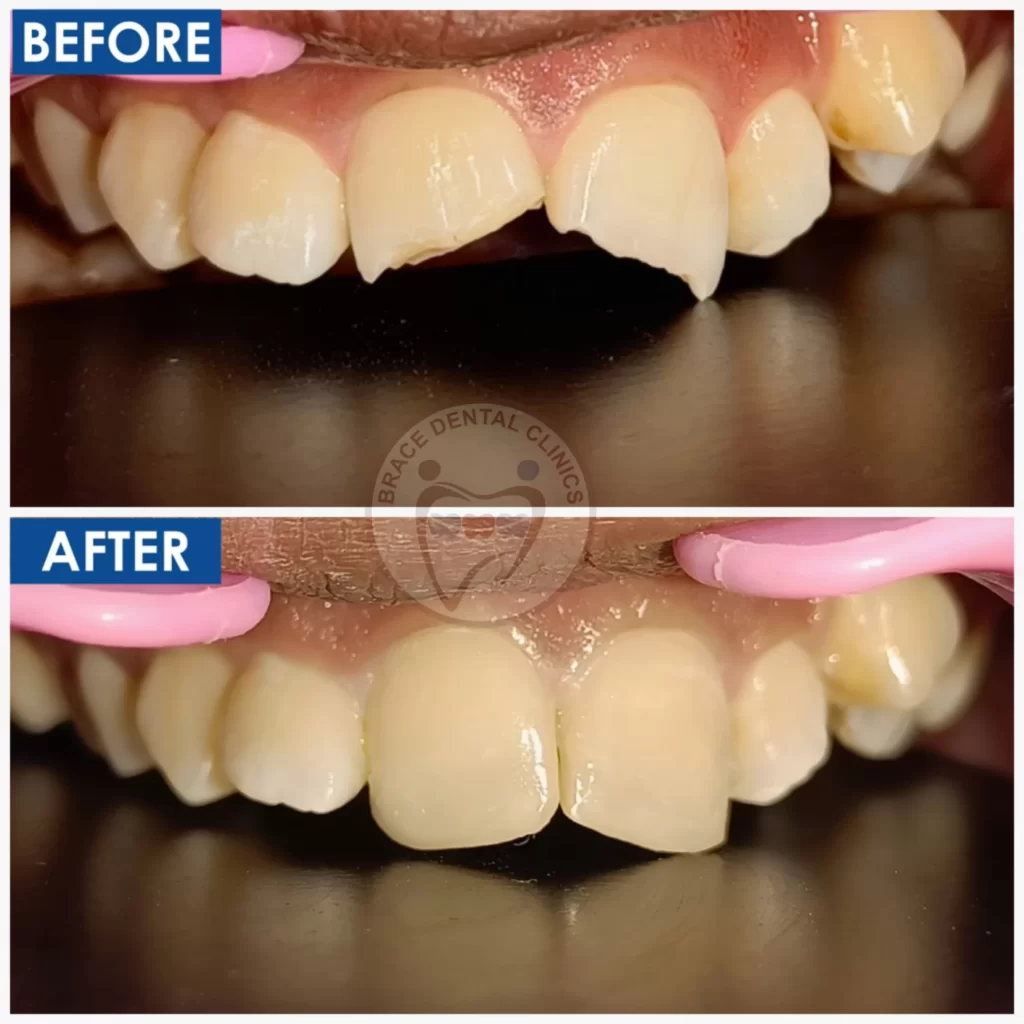Click to call
Restorations & Fillings
What is it all about?
Dental fillings are a form of therapy applied to teeth that have been harmed by accident or decay in order to repair and restore function. They are utilized to fill up the hole or cavity left behind after a tooth is partially removed by decay. The filling substance is intended to protect the tooth from future harm and return the tooth to its natural form and function. It is possible to utilize a variety of filler materials, including porcelain, composite resin, and amalgam (a mixture of metals). The size and location of the filling, the patient’s preferences, and the dentist’s advice will all play a role in determining the type of filling that is utilised.
When to get a filling done?
When a patient has a cavity or a damaged tooth, they need a dental filling because:
- Fillings restore the tooth’s structure and function
- Fillings stop future decay or infection;

Typical Symptoms necessitating a dental filling:
- Tooth sensitivity
- Discomfort when chewing or biting
- Obvious fractures or holes in the tooth
- Dark patches on the tooth surface

Types of Dental Fillings:
Amalgam Fillings: Constructed from a combination of metals, including mercury, copper, tin, and silver. Although they are strong and long-lasting, they are also noticeable in the mouth.
Composite fillings: Constructed of a combination of plastic and tiny glass flakes. They match the natural teeth beautifully and are tooth-colored, however they might not survive as long as amalgam fillings.
Glass ionomer: Acrylic and glass particles are mixed to create glass ionomer fillings. They are less resilient than other filling materials, but they emit fluoride to help prevent the teeth from decay.

Steps:
- Preparation and diagnosis: The dentist will identify the cavity.
- Removal of decay: The decaying area of the tooth will be removed by the dentist using a drill or laser.
- Cleaning and shaping: The cavity will be cleaned and prepared for a filling by the dentist.
- Placement of cement: The filling material will be inserted into the cavity by the dentist and may be a resin composite, or glass ionomer.
- Hardening: A special light will be used to harden the filler material.
- Polishing: To maintain a smooth surface and good bite, the dentist will polish the filling.
- Evaluation: To achieve a comfortable and useful outcome, the dentist will assess the bite and make any required changes.

